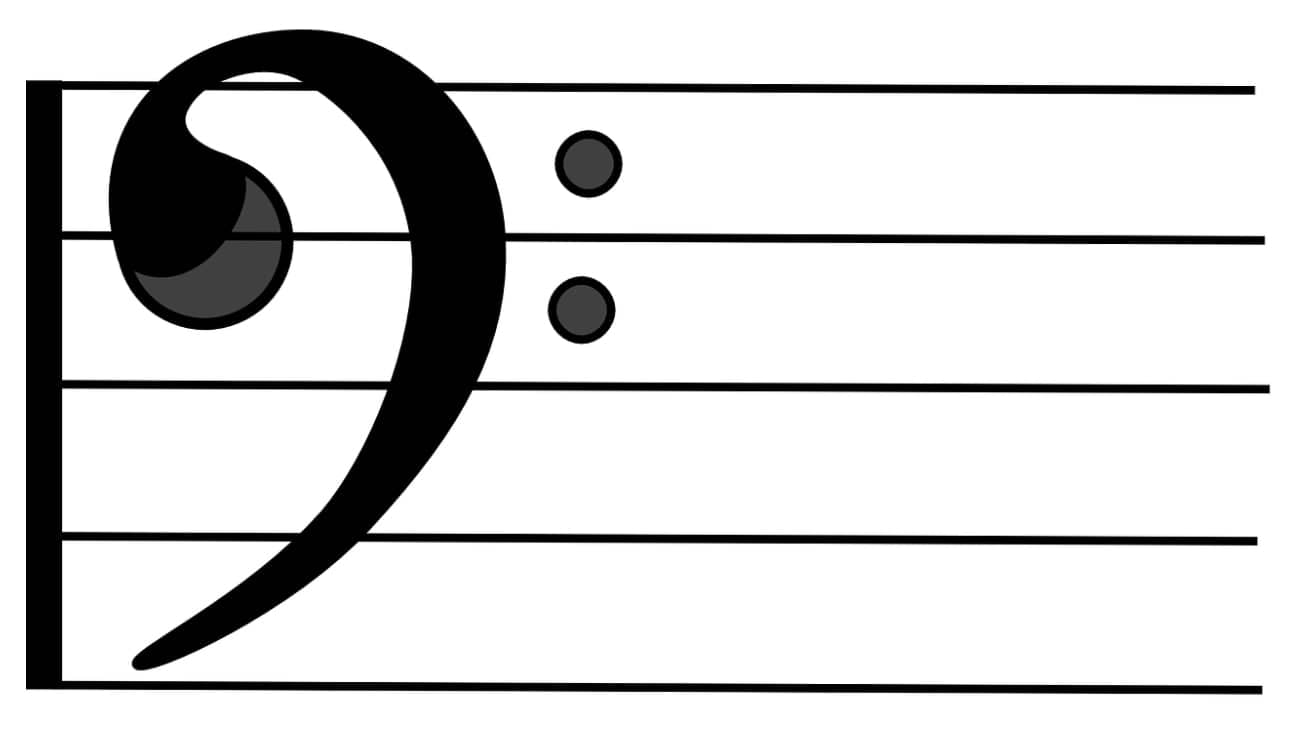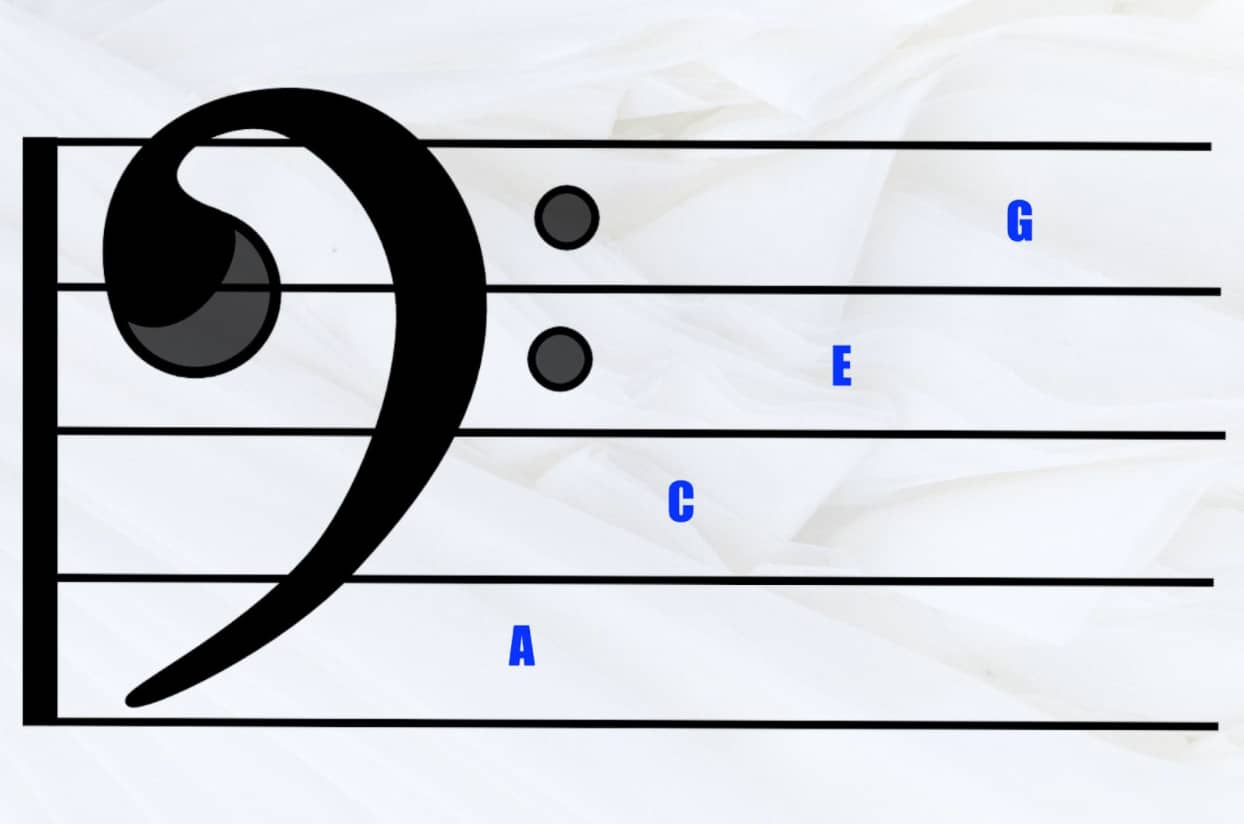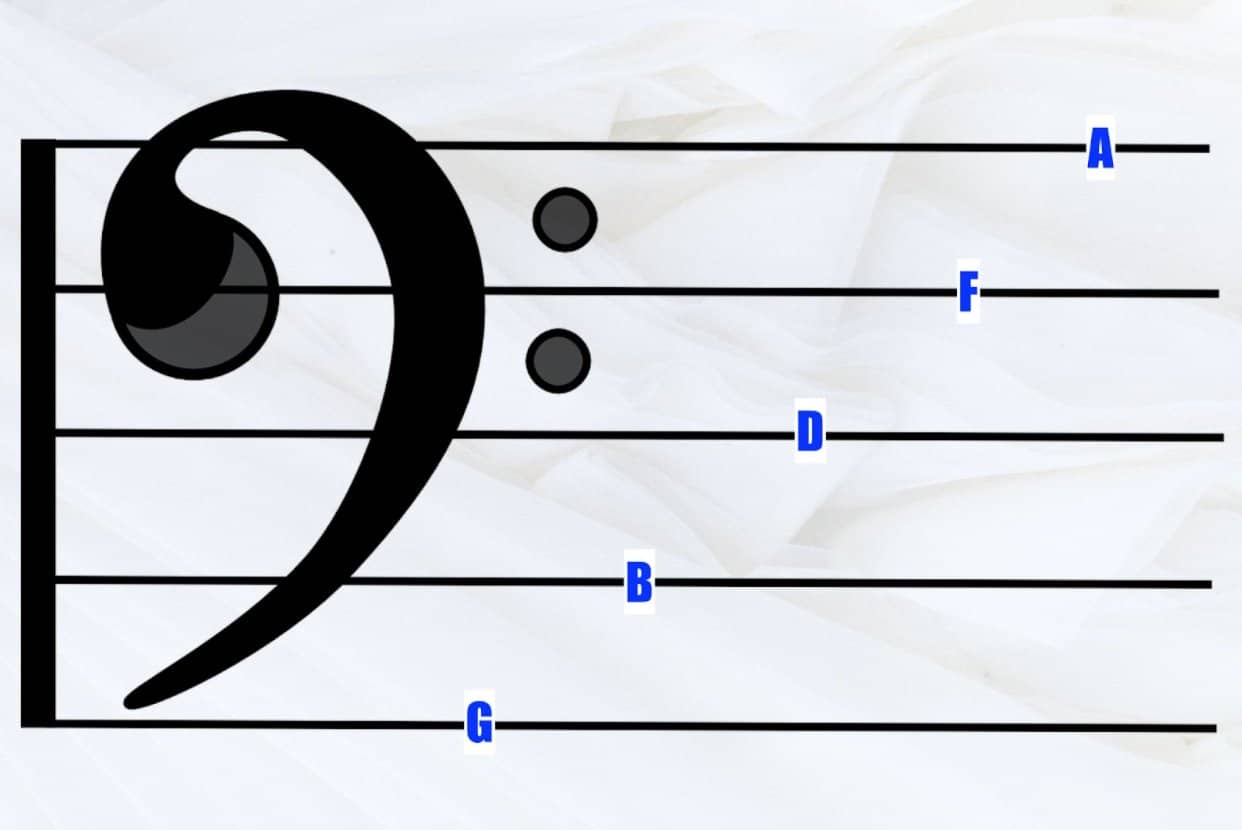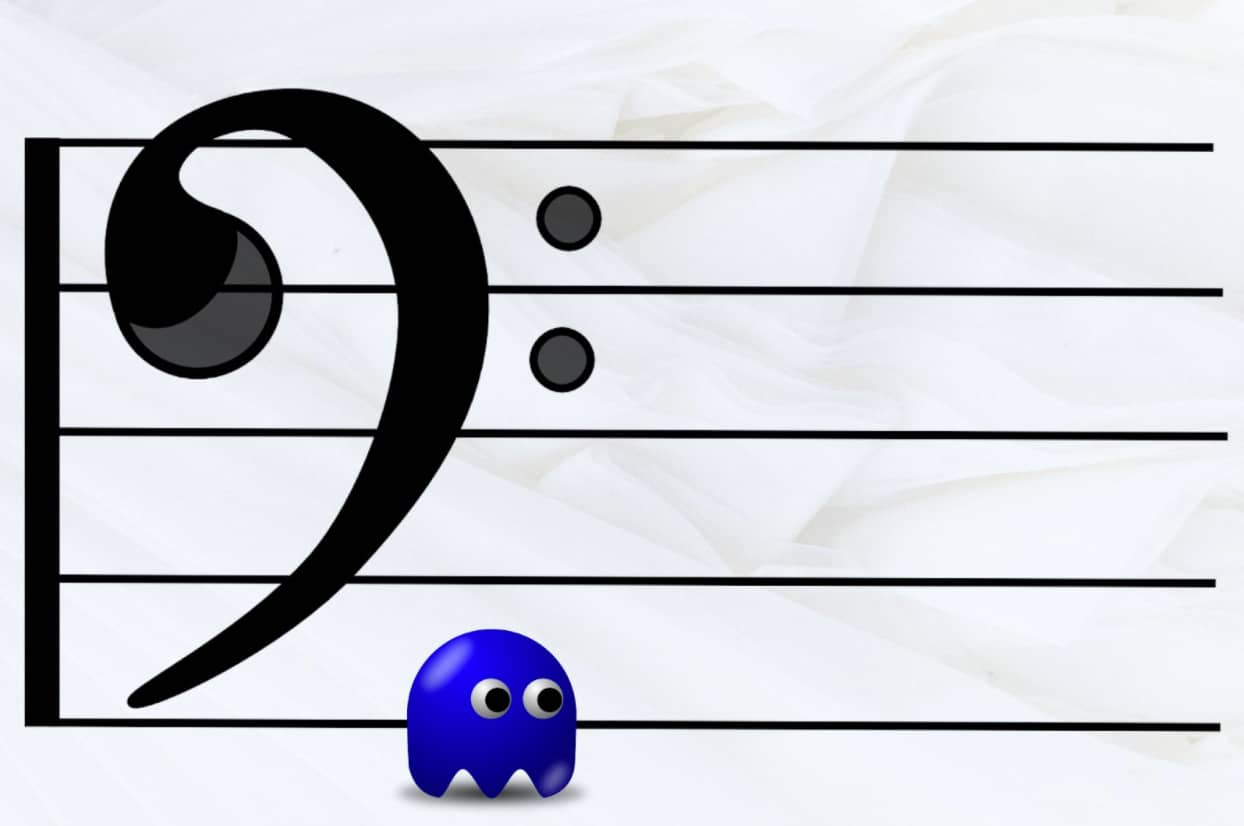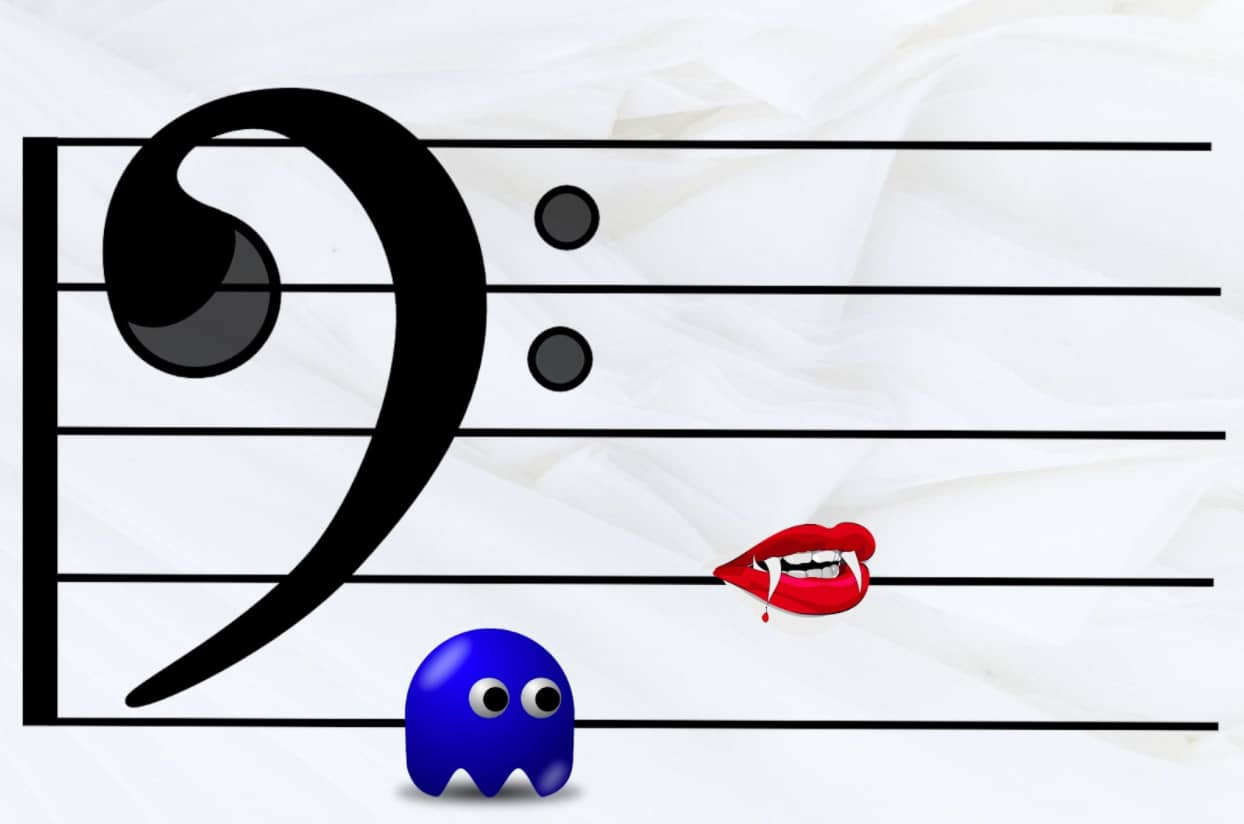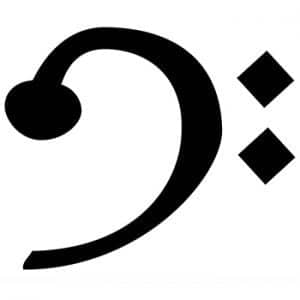 Have you ever struggled with the many ways to remember bass clef notes?
Have you ever struggled with the many ways to remember bass clef notes?
Some of them make sense… at least on the surface.
But they still require you to remember something.
For example, if your memory is already strong, it’s fine to make up an acronym like “all cows eat grass” to remember the notes ACEG.
But what do you do if you struggle to remember a sentence like that?
Read every word on this page because we’re going to permanently solve this problem.
If you need to know how to remember music notes, you’re about to discover the ultimate secret.
Let’s dive in!
How to Remember Bass Clef Notes (Piano)
Music notation separates notes into two separate clefs. The treble clef indicates the higher notes and the bass clef is used for the lower notes.
Clefs are actually really interesting, so it pays to read up on them.
For now, all you need to know is that the bass clef looks like this:
The notes between the lines are:
A – C – E – G
The notes on the lines are:
G – B – D – F -A
Separated in this way, it can be hard to notice the pattern.
All that’s happening is that you’re moving in a logical manner through a small part of the alphabet. The only weird thing is that you’re starting on “G.”
So how can you remember that the bottom line is G?
Let’s explore some options, alternatives to acronyms like “Good Boys Deserve Fudge Always.”
Use The Pegword Method
As mentioned, you’re just rotating upwards from G to A based on the idea that the notes are represented only by A-G.
Instead of using acronyms that require you to remember sentences, try creating pegs instead.
WIth this approach, you’re going to assign an image to each letter of the alphabet.
For example, “G” can be associated with a ghost.
I would encourage you to avoid a generic image. Pick a ghost that you’re familiar with.
For example, most of us will remember the ghosts from Pacman.
If you imagine that one of these ghosts has a bar stuck through his torso and is in the “basement” of musical notation, it will be easy to remember that the bottom line is a “G.”
(Note: “Basement” has the sound “bass” in it.)
Amplify Acronyms
If you choose to use an acronym from this point forward, amplify them in this way.
Instead of “Ghostly Boys Deserve Fudge Always,” make those boys specific boys. You could use the vampire characters from The Lost Boys, for example. They could be sinking their teeth into the second line. Because each vampire has two fangs each, this fact can help you remember that it’s the second line from the bottom.
For “deserve,” you can add on another image. Dee Snider deserving a new candy cane for Christmas comes to my mind. But he gets greedy and wants three, reminding me that it’s the third line from the “basement.”
Merely by completing this association exercise, you’ll probably find you start remembering the notes better.
Essentially, this approach turns the bass clef into a kind of Memory Palace.
Warning:
There is a catch here.
If you use the Lost Boys for B and aren’t specific, fangs could make you think that it’s Dracula to indicate D. So keep in mind that you want to be highly specific about the images you choose.
The best way to do that is to make them personal to you. If you ever run into issues, my Memory Palace troubleshooting video is here to help.
Use Logic
Once you have an image for each letter, I would suggest just focusing on the notes that sit on the lines.
Since we know that notes run only from A-G, the note in the blank space about G must be an A. The note about B must be a C, etc.
Personally, I think having images for the spaces is a good exercise, but not necessarily to identify the note. Thanks to the logic of how musical notation works, you only have to memorize either the lines or the notes between the lines.
Apply The Associations To The KeyBoard
As a best practice, you can transport your associative-imagery from the musical staff to the keyboard itself. This approach is similar to how you can memorize the fretboard of a guitar or bass.
To take one example, imagine that every time you see three dark windows on a cathedral, a ghost appears between windows one and two. That’s a fun and easy way to remember that “G” is the note between the first two black bars on a piano keyboard.
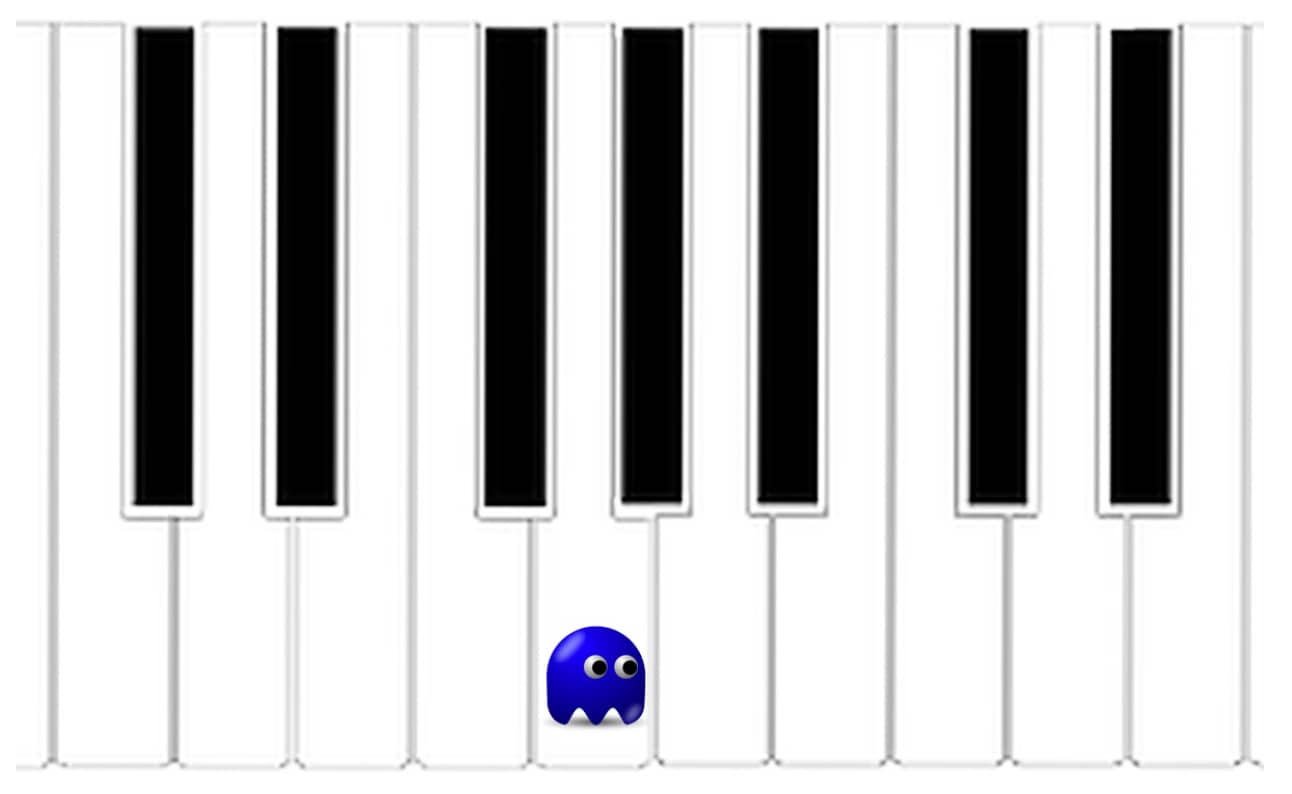
To remember that the note to his right will always be an “A,” you can imagine that the ghost is eating an apple using the story and linking method.
By knowing how to read sheet music and the keyboard, you’ll compound your skills and learn songs a lot faster.
Make Remembering The Bass Clef Exciting
Acronyms aren’t for everyone.
By all means, use them if you find them beneficial.
But if you want to make sure you remember not only the name of the note, and where it sits on both the bass clef and your instrument, I hope my suggestions help you out.
The best part is that when you use techniques like the ones you’ve discovered today, you’ll not only become a better musician.
You can use this approach to escape rote learning forever in any topic.
For more information, get my FREE Memory Improvement Kit:
This simple set of videos and worksheets will help you extend what you’ve learned today.
And the best part is that you can also use this technique to tell you the number of each and every key on the piano.
Dive in, enjoy and happy playing!
Related Posts
- Stoic Secrets For Using Memory Techniques With Language Learning
Christopher Huff shares his Stoic secrets for using memory techniques when learning a language. You'll…
- Nelson Dellis On Remember It! And Visual Memory Techniques
Looking for visual memory techniques? And I mean truly visual. In this episode of the…
- How to Remember Key Signatures (From a Musician and Memory Expert)
If you're wondering how to remember key signatures, stop struggling with ineffective techniques. This quick…

